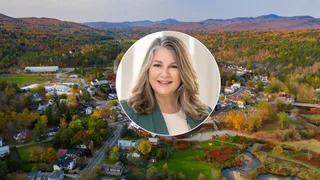.jpg/r%5Bwidth%5D=320/b8769e50-b8ce-11ef-ac65-8bf0289c6805-Mikolaj%20Niemczewski_shutterstock_1693558735%20(2).webp)
Navigating the complex world of captive insurance for property risks
The intricacies of managing property risks through captive insurance structures have become increasingly apparent in today’s evolving insurance landscape, a panel at the Cayman Captive Forum heard last week.
Rob Walling (pictured centre), vice president of Pinnacle Actuarial Resources, Gary Osborne (pictured left), vice president of Alternative Risk at Risk Partners, and Nate Reznicek (pictured right), president of Captives.Insure, took part in the panel that looked into some of the pressing issues and innovative solutions reshaping this field.
Walling highlighted a key challenge for reinsurers: balancing the cost of capital against rates for probable maximum loss (PML). He explained: “If you’re extending a quarter-million-dollar limit as your PML and getting a de minimis rate for it, a reinsurer still charges for the capital expended. Fundamentally, this becomes a cost of capital problem.”
An illustrative example comes from Walling’s work with resort hotels in hurricane-prone areas. For insurers, the PML might encompass the total building value. In contrast, risk managers may focus on more realistic scenarios, such as storm surges impacting the first floor. This discrepancy underscores the need for alignment between risk managers and reinsurers. “It’s about coming to the same level of discomfort on both sides regarding what the real PML is,” Walling noted.
Lenders often demand full-value insurance coverage for properties, which can lead to tension between them and risk managers. Reznicek observed: “Lenders may require full-value coverage without fully understanding the mitigated risks, leading to unnecessarily high insurance requirements.” Osborne added that negotiation is key in these situations: “We’ve seen plans initially requiring $80 million in coverage being negotiated down to $45 million after discussions.”
Captives are increasingly being used to address gaps in traditional property insurance markets. Walling pointed out that large apartment developers, for example, are turning tenant liability and property insurance into profit centres by self-insuring and bypassing traditional carriers like State Farm or Allstate.
A particularly innovative development is the emergence of association captives for homeowners' associations (HOAs). Walling recounted how a Utah billionaire, dissatisfied with homeowners’ insurance rates, successfully lobbied to change state laws, allowing HOAs to issue policies to their members. “This approach is spreading, with other domiciles now considering similar changes,” Walling saids. Osborne reflected on his earlier work, noting: “We did something similar 20 years ago, issuing personal lines policies for high-net-worth family offices.”
Certain niche markets face unique hurdles in obtaining effective coverage. Osborne highlighted the case of luxury car dealerships: “You could have $50 million worth of vehicles sitting in a lot. Traditional coverage often includes high deductibles, and finding adequate excess coverage can be challenging.”
Creative solutions, such as installing solar-panel canopies over vehicle lots, not only mitigate risks like hail damage but also provide tax credits. Osborne elaborated, “One Lexus dealership in Colorado invested in solar canopies, combining risk mitigation with financial incentives.”
Walling and Reznicek also discussed the growing popularity of parametric insurance. These policies provide payouts based on predefined triggers, such as wind speeds or rainfall levels, rather than actual losses. “Clients are increasingly comfortable with taking on initial event risks while purchasing reinsurance for second or third events,” Reznicek said. “This approach is cost-effective and protects against catastrophic exposures.”
Another trend is direct issuing of policies from captives to operating companies. Walling shared an example: “A chain of resort hotels placed 100% of their tower in the reinsurance market via their captive. The cost savings justified the captive’s creation.”
Captives offer unique opportunities to tailor coverage and optimise cost structures. However, they are not without challenges. High-net-worth individuals and businesses often face regulatory hurdles, capital requirements, and the complexity of structuring policies.
Osborne emphasised the importance of long-term planning: “Captives can act as tax-efficient rainy-day funds, but they require careful management. Over a five to ten-year horizon, loss ratios generally stabilise, but there will always be high-severity events to account for.”
In conclusion, the captive insurance model is evolving to meet the diverse needs of property owners, from mitigating risks for luxury assets to creating innovative policy structures for large enterprises. As Reznicek put it, “The key is finding the right balance between risk retention and cost savings, ensuring that the structure works for both the insurer and the insured.”
Did you get value from this story? Sign up to our free daily newsletters and get stories like this sent straight to your inbox.

